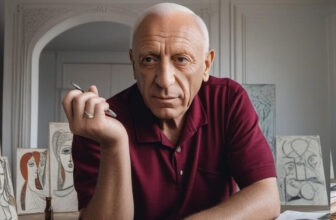
Leonardo Da Vinci’s Best Paintings
Leonardo da Vinci, one of history’s greatest polymaths, left an indelible mark on the world of art. Known for his insatiable curiosity and unparalleled skill, Leonardo’s paintings continue to captivate art enthusiasts centuries after their creation. This article will explore his top 10 best paintings, unraveling the artistry, mystery, and genius behind each masterpiece.
1. Mona Lisa
Arguably the most famous painting in the world, the “Mona Lisa” is an emblem of Renaissance art. Painted between 1503 and 1506, this portrait of Lisa Gherardini is celebrated for its enigmatic expression and groundbreaking use of sfumato. Sfumato, a technique pioneered by Leonardo, creates a soft, gradual transition between colors and tones, giving the “Mona Lisa” her lifelike quality. The painting’s subtle interplay of light and shadow continues to intrigue viewers, who often ponder the secret behind her mysterious smile.
2. The Last Supper
“The Last Supper,” painted between 1495 and 1498, is a monumental fresco located in the Convent of Santa Maria delle Grazie in Milan. This iconic work depicts the moment Jesus announces his betrayal by one of the apostles. Leonardo’s innovative composition captures the emotional turmoil of the scene, with each apostle’s reaction reflecting their individual character. The use of perspective draws the viewer’s eye to Christ at the center, emphasizing his spiritual significance. Despite deterioration over time, “The Last Supper” remains a masterpiece of narrative art.
3. Vitruvian Man
Though not a painting, the “Vitruvian Man” is an essential inclusion when discussing Leonardo’s artistic legacy. This pen-and-ink drawing, created around 1490, illustrates the ideal human proportions as described by the ancient Roman architect Vitruvius. The “Vitruvian Man” exemplifies Leonardo’s fusion of art and science, showcasing his fascination with anatomy and geometry. Its enduring appeal lies in its symbolism of human potential and harmony with nature.
4. Lady with an Ermine
Painted between 1489 and 1490, “Lady with an Ermine” is a stunning portrait of Cecilia Gallerani, a young woman renowned for her intellect and beauty. The ermine, a symbol of purity and moderation, adds a layer of allegorical meaning to the painting. Leonardo’s meticulous attention to detail is evident in the lifelike texture of Cecilia’s skin and the animal’s fur. This work is a testament to his ability to capture both physical likeness and inner essence.
5. The Baptism of Christ
“The Baptism of Christ,” completed around 1475, is a collaborative effort between Leonardo and his master, Andrea del Verrocchio. Leonardo’s contribution, including the angel on the left and parts of the background, showcases his emerging talent. The delicate rendering of the angel’s features and the soft, luminous quality of the landscape hint at the genius he would later fully realize. This painting marks an important milestone in Leonardo’s artistic journey.
6. Ginevra de’ Benci
Created between 1474 and 1478, “Ginevra de’ Benci” is a portrait of a young Florentine noblewoman. This work, now housed in the National Gallery of Art in Washington, D.C., is notable for its psychological depth and innovative composition. Leonardo’s use of a juniper bush as a backdrop is both a play on Ginevra’s name and a symbol of chastity. The subtle shading and penetrating gaze of the subject reflect his mastery of portraying human emotion.
7. The Adoration of the Magi
“The Adoration of the Magi,” an unfinished masterpiece, was commissioned in 1481 for the Monastery of San Donato in Florence. The chaotic yet harmonious composition features a complex interplay of figures, each capturing a moment of wonder and reverence. Although incomplete, the painting reveals Leonardo’s meticulous planning and ability to convey dynamic movement. The intricate details and expressive faces make it a fascinating study of his creative process.
8. Saint John the Baptist
Completed between 1513 and 1516, “Saint John the Baptist” is one of Leonardo’s later works. This enigmatic painting portrays Saint John with a serene smile and a pointing gesture, emphasizing spiritual enlightenment. The dark background contrasts sharply with the illuminated figure, highlighting Leonardo’s mastery of chiaroscuro. The painting’s mysterious aura and symbolic depth have made it a subject of extensive interpretation.
9. The Annunciation
Painted in the early 1470s, “The Annunciation” showcases Leonardo’s precocious talent. This work, attributed to both Leonardo and Verrocchio, depicts the angel Gabriel announcing to Mary that she will bear the son of God. The delicate rendering of Mary’s expression and the intricate details of the garden exemplify Leonardo’s attention to naturalism. The use of perspective and light underscores his innovative approach to composition.
10. Salvator Mundi
“Salvator Mundi,” created around 1500, depicts Christ as the Savior of the World. This painting, rediscovered in the 21st century, has sparked significant debate regarding its attribution to Leonardo. The ethereal quality of Christ’s face and the intricate rendering of the crystal orb reflect Leonardo’s unparalleled skill. Despite controversies, “Salvator Mundi” remains a compelling example of Renaissance art and a testament to Leonardo’s enduring influence.
Leonardo da Vinci’s paintings are not merely works of art; they are windows into the mind of a genius. Each piece reflects his mastery of technique, deep understanding of human nature, and relentless pursuit of knowledge. From the enigmatic smile of the “Mona Lisa” to the spiritual depth of “Saint John the Baptist,” his creations continue to inspire and captivate audiences worldwide. Leonardo’s legacy as a painter is a testament to his timeless appeal and the universal power of art.





